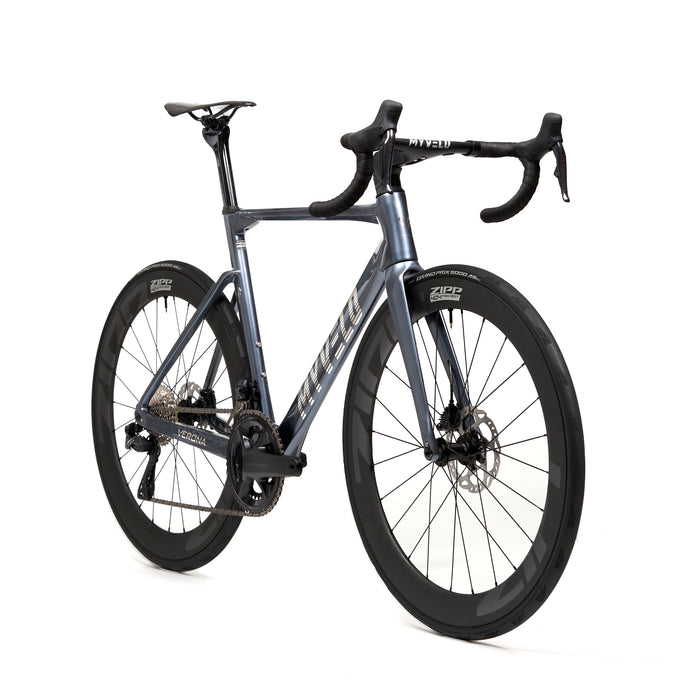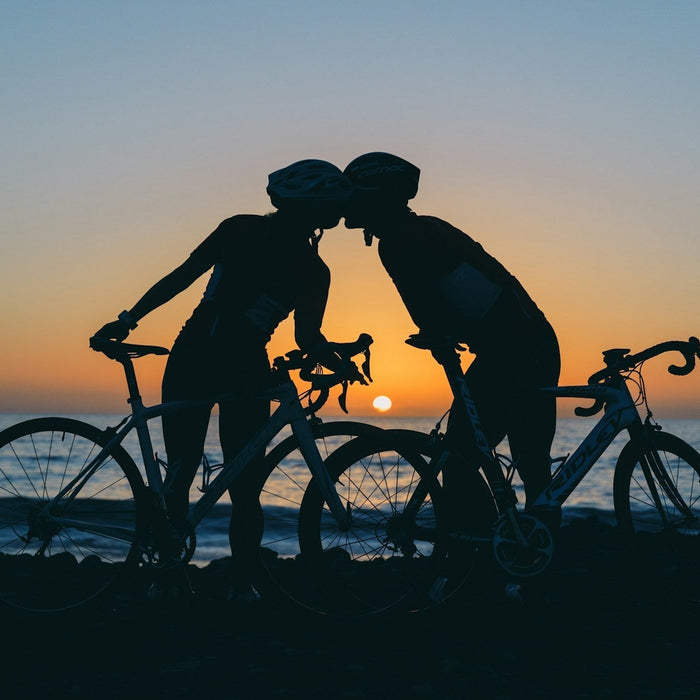
Verona road bike
incl. FREE shipping & free returns

Von Vincent Augustin |
4 minutes read time

When it comes to improving your performance on the road bike in the long term, you may often hear about high-intensity units, interval training or sprints. These of course have their place, but the secret of many successful endurance athletes lies in an often neglected training method: so-called Zone 2 training.
Zone 2 is one of five or six heart rate zones often used in endurance training. Each zone has a specific intensity based on your individual heart rate range. Zone 2 is around 60-70% of your maximum heart rate, meaning you are in a range where you can still talk comfortably without getting out of breath.
In contrast to high-intensity sessions where you really have to challenge yourself, Zone 2 training is relaxed - at least at first glance. You ride at a moderate pace that doesn't feel strenuous but can be maintained over longer periods of time. That's exactly what makes this form of training so valuable.
Zone 2 training has numerous benefits, especially for endurance athletes such as road cyclists. It may not seem as spectacular as tough interval training, but the long-term effects are enormous. Here are some reasons why you should include Zone 2 training in your training plan:
In zone 2, your body relies primarily on fat reserves as an energy source. This means that you are training your body's ability to burn fat efficiently. This is not only beneficial for losing weight, but also for your endurance performance. The better your body can use fat as an energy source, the longer you can last on the road bike without having to rely on fast carbohydrates.
Zone 2 training strengthens your cardiovascular system and increases your muscles' ability to use oxygen efficiently. This means that over time you can ride longer and faster without your muscles tiring or getting out of breath. You build a solid foundation that will benefit you later in more intense sessions.
Since you don't push yourself to your limits in Zone 2, the risk of overload and injury is significantly lower than with high-intensity training sessions. Especially if you train a lot, Zone 2 training can help protect you from burnout or overtraining. It allows you to increase your training volume without overexerting yourself.
After intensive training sessions or races, Zone 2 training can also be used as active regeneration. The moderate load improves blood circulation, which promotes the removal of metabolic waste in the muscles. This means you recover faster and are ready for the next challenge.
To train effectively in zone 2, you must first determine your heart rate zones. A common method is to calculate your maximum heart rate (HRmax). A simple but inaccurate formula is:
HFmax = 220 – your age
For example, if you are 30 years old, your maximum heart rate would be 190 beats per minute (BPM). Zone 2 would then be between 60% and 70% of this maximum heart rate, i.e. 114 to 133 BPM.
However, it is more accurate to have your heart rate zones determined through a lactate test or performance diagnostics. Many modern racing bike computers and fitness watches, such as those offered by Garmin or Wahoo, now offer this function automatically.
The key to success in Zone 2 training is consistency. Here are some tips on how to incorporate Zone 2 training into your training plan:
Schedule regular long rides where you ride at a steady pace that corresponds to your Zone 2. These rides should last at least 1.5 to 2 hours to achieve the full effect. Flat routes or gentle climbs where you can control your pace are particularly suitable.
If you are already doing more intensive sessions, you can supplement them with Zone 2 training. A classic weekly plan could look like this: one or two interval sessions that really challenge you, plus one or two longer Zone 2 rides where you concentrate on your basic endurance.
To avoid boredom, vary your routes. A great option is to tour new areas or on unpaved paths. Your equipment also plays a role: a reliable, comfortable racing bike like the MYVELO Verona racing bike supports you perfectly on longer Zone 2 rides.
During long Zone 2 sessions, your body burns mainly fat, but it is still important to consume enough energy to maintain performance. Eat a balanced diet with complex carbohydrates, healthy fats and sufficient protein to provide your body with optimal nutrition.
Zone 2 training is a long-term strategy. You won't see huge improvements overnight, but after a few weeks of regular training you should feel an improvement in your endurance and well-being. You may suddenly notice that you can ride faster without your heart rate increasing, or that you feel less exhausted after long rides.
Zone 2 training may seem unspectacular at first glance, but it is a powerful tool for increasing your endurance and performance on the road bike in the long term. It not only improves fat burning and aerobic capacity, but also protects you from overload and helps you regenerate.
So the next time you get on your racing bike, remember: Don't always go faster, higher, further - sometimes real progress lies in a relaxed pace. Maybe on a nice tour with your Verona racing bike from MYVELO.
Start your Zone 2 training today and discover how it sustainably improves your performance on the road bike!

Als Rennradfahrer möchte man möglichst ständig besser werden: schneller, ausdauernder und effizienter. Doch was, wenn der Schlüssel zu diesen Zielen nicht nur auf zwei Rädern liegt? Rudern, oft unterschätzt, bietet eine ideale Ergänzung zum Radtraining. Es trainiert nicht nur den ganzen Körper, sondern verbessert auch die Ausdauer, Kraft und Stabilität – entscheidende Faktoren für jeden Radsportler.

Nach einer intensiven Rennrad-Einheit ist die richtige Regeneration entscheidend, um Leistung zu verbessern, Verletzungen zu vermeiden und langfristig Fortschritte zu erzielen. Doch wie sieht eine effektive Erholung aus? Hier bekommst Du die besten Tipps zur optimalen Regeneration nach dem Rennradtraining.

Erfahre, wie Radsport-Ligen aufgebaut sind und weitere Infos zur Organisation im Profi-Radsport!